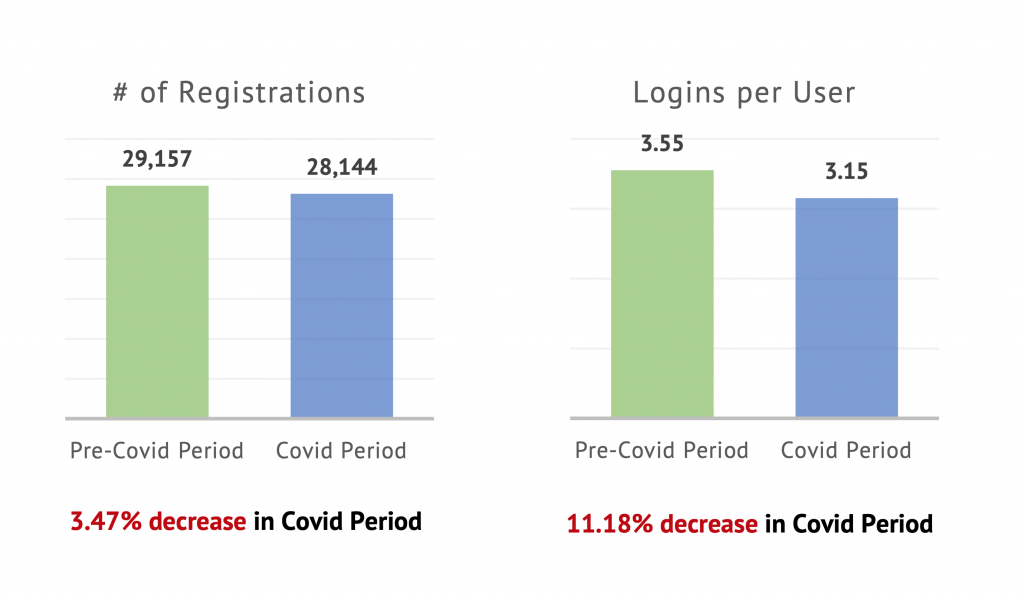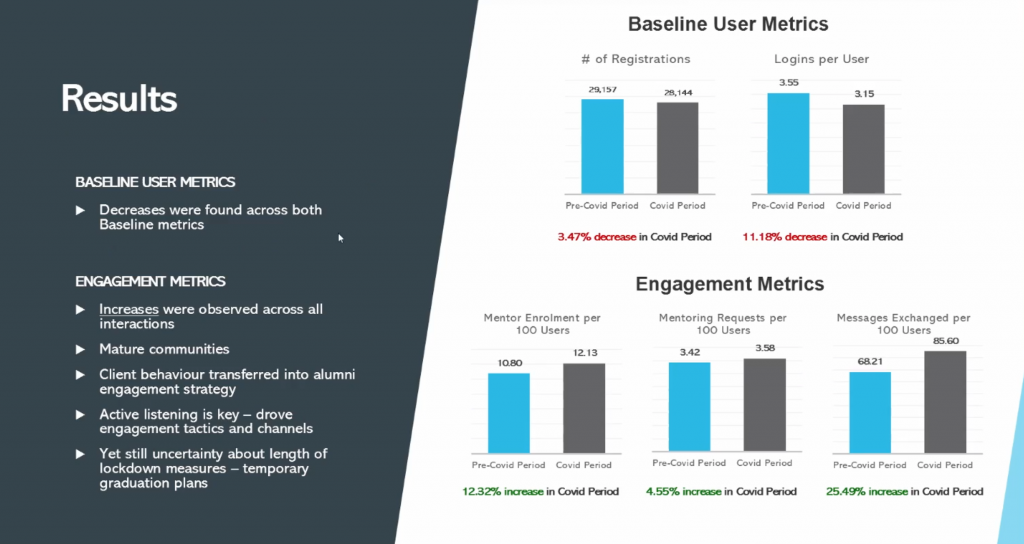An analysis of over 70,000 community members
Our April Creating Connection virtual Roundtable event brought together members of our Community Builders network to discuss the impact of the COVID-19 pandemic on community engagement.
Subscribe to receive updates when we publish new and interesting content.
Helio Flores, Data Analyst and Johana Canda-Fiserova, our Strategic Engagement Consultant here at Aluminati recently undertook an analysis of over 70,000 community members across our Aluminate Community Builder platforms to see what impact the global pandemic had had on user engagement levels. As of April 2021, it has been just over a year since COVID-19 was declared a pandemic and at Aluminati we place great value in constantly evaluating our work especially at such a significant time. It is important to look at quantitative data to allow for an informed analysis of our communities behaviours. Nadya Pohran, PhD is a cultural anthropologist, writer, educator and creative strategist. Her work is grounded in empathy and human-centred design principles. She helps individuals and communities to see the world from new perspectives, creating and implementing solutions to problems. In her recent series on community, Nadya noted that communities existed before the pandemic, and will be around long after. She argued that in many contexts, it’s not what you know, but who you know. “In the midst of this widespread focus on community across all sectors of life, it’s important that we really understand (and are implementing!) what it means to be a community, rather than just paying lip-service to the concept. Firstly, a community is more than a group of people. You might be familiar with the age-old maxim “there’s strength in numbers.” This saying is often used to convey the power of a community. But anyone who has been in an over-crowded supermarket, or a maxed-out train carriage, knows without a doubt that strength doesn’t come from sheer numbers alone; strength only comes when the individuals involved decide to intentionally work together towards a common goal. Strength comes from intention, connection, and active engagement. “ – Nadya Pohran, PhD. Good communities are built strategically so that individuals will want to actively participate within them. For this to happen it is essential that the community structure is human-centric. With the UK and much of the world living under government-imposed Coronavirus restrictions in 2020/21, the impact on traditional communication dynamics across all factors of life, work and education has been significant. Our data analysis contrasts the changing behaviours of users across our Aluminate Community Builder platforms from April 2019 to February 2021. Helio noted that it is normal to observe a year on year decrease in registrations and consequently a reduction in additional engagement as a service matures. The reasons for this ‘normal’ trend can be: Whist baseline metrics across engagement platforms continued to reduce during the Covid period, the rate at which they decreased on the Pre-Covid period was significantly lower than normal, with net gains of 34.20% and 23.48% for registrations and logins, respectively. Our engagement metrics, on the other hand, experienced a reversal of trend, with a substantial increase in activity during the Covid period vs Pre-Covid period. There does appear to have been a significant influence on engagement activity with higher rates of volunteering, higher rates of mentor utilisation and more messaging activity within those newly formed relationships. This higher propensity for engagement may be down to the personal effects of the pandemic restrictions on students and alumni, in particular the loss of other avenues of connection and communication. This is perhaps supported further by examining the intra-year figures across our engagement metrics (see below), which revealed differences between the Covid and Pre-Covid period were at their peak during the first 3 to 6 months of the Covid period when the proclivity to seek other avenues to connect and communicate may have been at their highest. How can we best meet our strategic goals and community priorities in this new normal? Can we return to the old normal or is a hybrid model of delivery the best way forward for our communities? There is no doubt that the global pandemic has accelerated the adoption of digital technologies for their community platforms and this, in turn, has led to some interesting new opportunities for engagement and Johana argued that a human-centred approach will lead to increased community engagement but also community longevity. Download our white paper The impact of COVID-19 on user engagement levels within established digital community platforms.
Why is this significant?

What is a community?

Analysis Approach

Pre-Pandemic Trends

The Results

What does the future hold?
Find out how the Aluminate Community Builder can help your community thrive, whatever its needs and scalability requirements.





